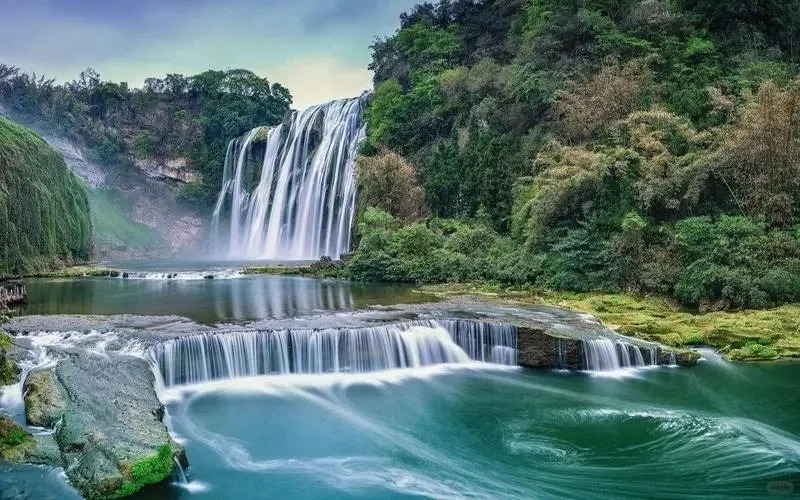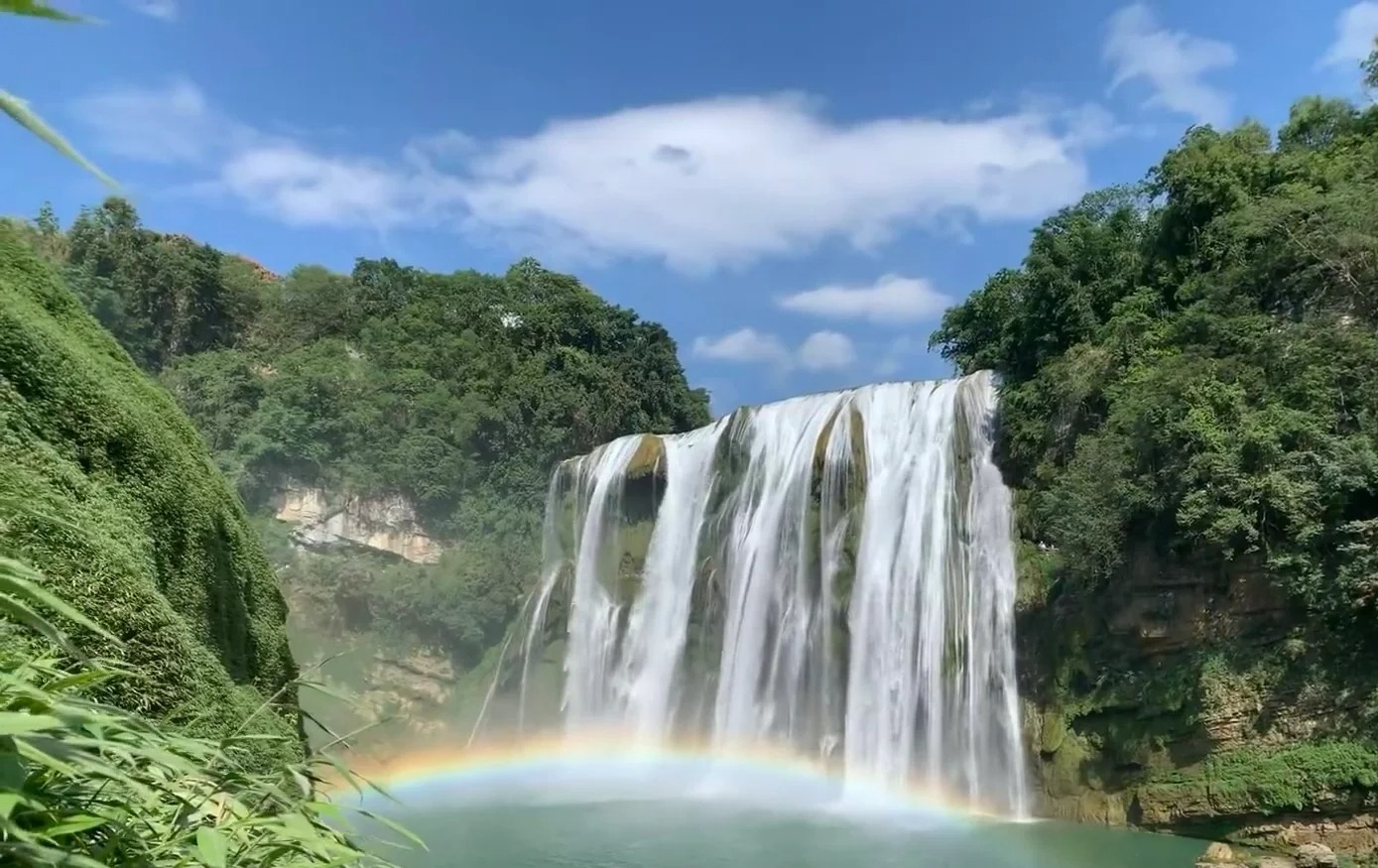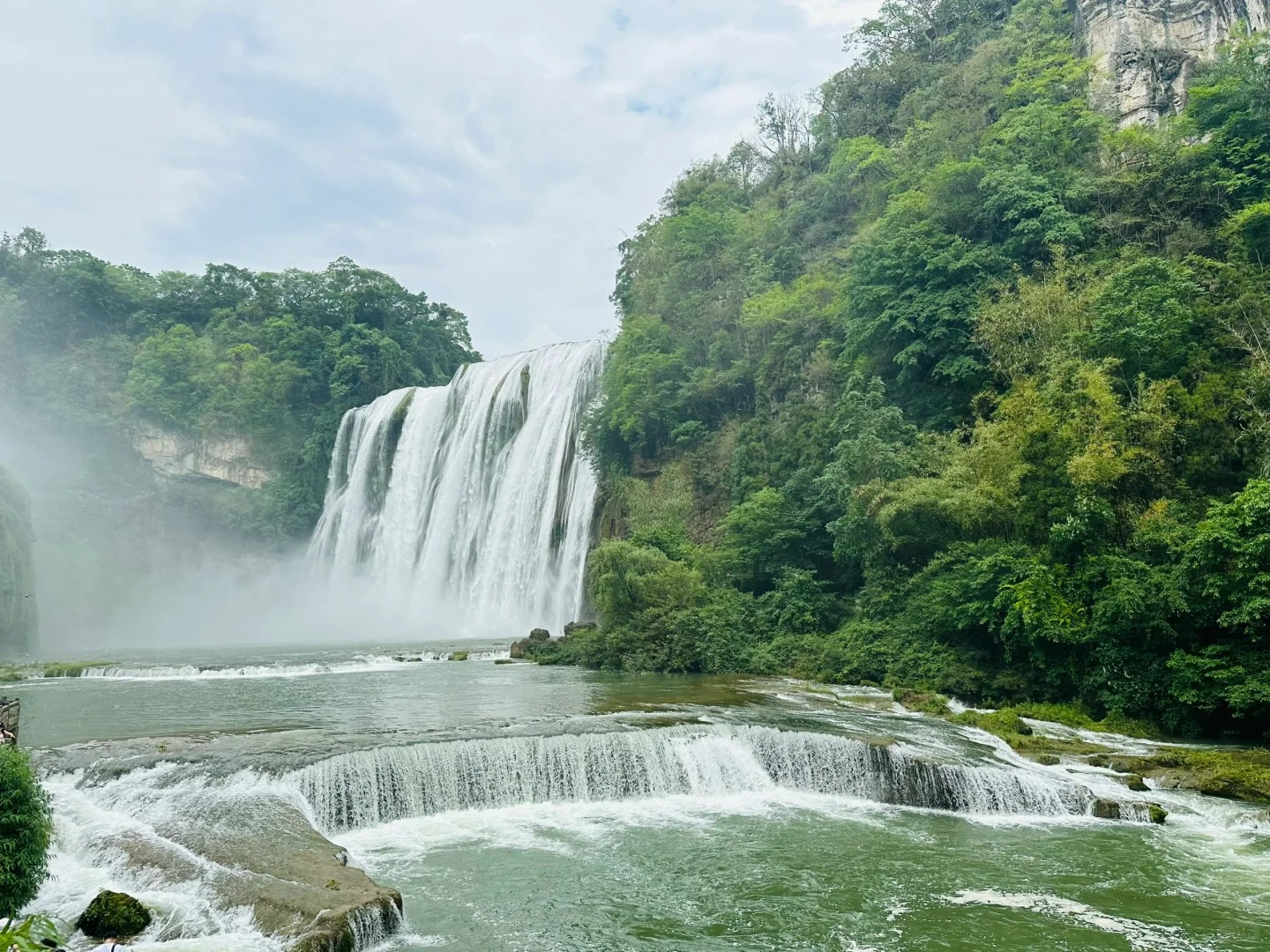Introduction to Huangguoshu Waterfall
Nestled in the lush landscapes of Guizhou Province, China, the Huangguoshu Waterfall stands as a testament to nature’s raw power and beauty. Located about 128 kilometers southwest of Guiyang, the provincial capital, this natural wonder has captivated visitors for centuries.
Huangguoshu, which translates to “Yellow Fruit Tree” Waterfall, holds the prestigious title of the largest waterfall in Asia. Its thunderous roar and misty veil create an awe-inspiring spectacle that draws millions of visitors each year.
As one of China’s most famous natural attractions, Huangguoshu Waterfall embodies the perfect blend of natural splendor and cultural significance, making it a must-visit destination for nature enthusiasts and cultural explorers alike.

Natural Features and Geology
Huangguoshu Waterfall’s impressive statistics speak to its grandeur:
| Feature | Measurement |
|---|---|
| Height | 77.8 meters (255 feet) |
| Width | 101 meters (331 feet) |
| Water Flow | 700 cubic meters per second (peak season) |
The waterfall is part of a larger karst landscape, characterized by limestone formations sculpted over millions of years. This unique geology creates a diverse ecosystem supporting a rich variety of flora and fauna.
Seasonal variations dramatically affect the waterfall’s appearance:
- Summer (June-August): Highest water flow, creating a thunderous spectacle
- Winter (December-February): Reduced flow, sometimes revealing the underlying rock face
- Spring/Autumn: Moderate flow, often considered the most picturesque seasons

The Water Curtain Cave
One of Huangguoshu’s most remarkable features is the Water Curtain Cave (Shuiliandong), a natural cavern that allows visitors to walk behind the waterfall. This unique perspective offers an immersive experience, surrounded by the roar of cascading water.
Local folklore imbues the cave with mystical significance. One legend tells of a dragon that once lived behind the falls, blessing the land with abundant water. Today, walking through the cave is said to bring good fortune and longevity.
The cave’s misty environment and the play of light through the water create an otherworldly atmosphere, making it a highlight of any visit to Huangguoshu.
Huangguoshu Waterfall Scenic Area
The waterfall is the centerpiece of a larger scenic area encompassing:
- Doupotang Waterfall: A wider, multi-tiered fall nearby
- Luositan Waterfall: Known for its “rope-like” appearance
- Tianxingqiao Scenic Area: Featuring unique stone formations
Visitors can explore the area via well-maintained walking trails, with several viewing platforms offering spectacular vistas. The park’s layout allows for a full day of exploration, with each turn revealing new natural wonders.

Cultural Significance
Huangguoshu Waterfall holds deep cultural importance in Chinese heritage. It has inspired poets, painters, and philosophers for centuries, often appearing in classical Chinese landscape paintings.
The surrounding region is home to several ethnic minority groups, including the Bouyei and Miao peoples. Their traditional customs and festivals, often centered around water and nature worship, add a rich cultural dimension to the area.
Local traditions include:
- Annual “Waterfall Jumping” festivals
- Crafting of silver jewelry inspired by the waterfall’s forms
- Traditional songs and dances celebrating the power of water

Visitor Information and Practical Tips
Best times to visit:
- April to October for optimal weather and water flow
- Avoid national holidays for smaller crowds
Getting there:
- Fly to Guiyang, then take a bus or hire a car (2-3 hour drive)
- Direct buses available from major cities in Guizhou Province
Practical information:
- Entrance fee: ¥180 (as of 2024, subject to change)
- Opening hours: 8:00 AM to 5:00 PM
- Recommended visit duration: Full day
Essential items:
- Waterproof clothing and shoes
- Camera (waterproof if possible)
- Sun protection

Tourism Development and Conservation
Recent years have seen significant improvements in infrastructure around Huangguoshu, including better roads, visitor centers, and eco-friendly accommodations. These developments aim to enhance the visitor experience while minimizing environmental impact.
Conservation efforts focus on:
- Protecting the karst ecosystem
- Maintaining water quality
- Preserving local flora and fauna
Visitors can contribute to these efforts by:
- Staying on designated paths
- Not removing any natural materials
- Supporting local eco-friendly businesses
Huangguoshu Waterfall stands as a testament to nature’s power and beauty, offering visitors a multi-faceted experience that combines natural wonder with rich cultural heritage. As you leave, the roar of the falls echoing in your memory, you’ll carry with you a deeper appreciation for China’s natural treasures and the delicate balance between development and conservation. This majestic waterfall is not just a sight to behold, but a place where the spirit of China’s landscape truly comes alive.





